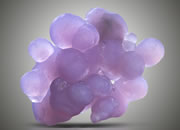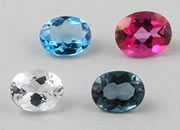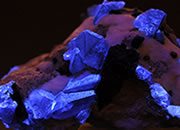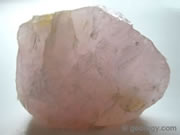Home » Minerals » Bornite
Bornite
A copper iron sulfide mineral often called "peacock ore" because of its tarnish.
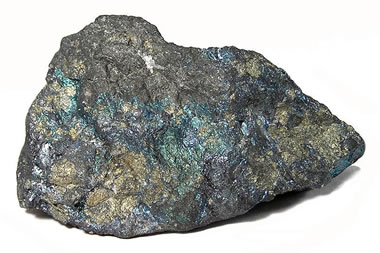
Bornite ore with light tarnish from the Copper Queen Mine, near Bisbee, Cochise County, Arizona. Specimen is approximately 7 x 5 x 4 centimeters. Specimen and photo by Arkenstone / www.iRocks.com.
What is Bornite?
Bornite is a copper iron sulfide mineral with a chemical composition of Cu5FeS4. It occurs in igneous, metamorphic, and sedimentary rocks. Minable concentrations of bornite occur in hydrothermal veins, contact metamorphic zones, and in the enriched zone of many sulfide mineral deposits.
Chalcopyrite, marcasite, and pyrite are other sulfide minerals commonly associated with bornite. Small amounts of bornite are also found disseminated through mafic igneous rocks and carbonaceous shales.
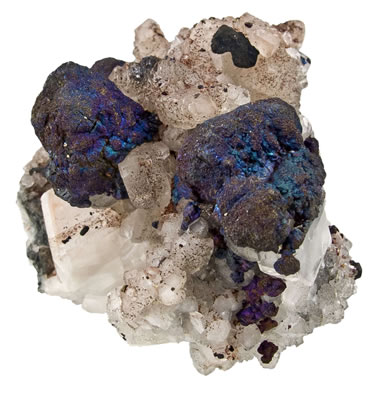
Bornite crystals with an iridescent tarnish up to about 1.5 centimeters across on calcite from the Karagandy Province, Kazakhstan. Specimen and photo by Arkenstone / www.iRocks.com.
"Peacock Ore"
Bornite is easily recognized because it tarnishes to iridescent shades of blue, purple, red, green and yellow. It is commonly called "peacock ore" or "purple copper ore" after these iridescent colors. Upon surface exposure, bornite will weather to chalcocite or other copper minerals.
Bornite is a popular and fast-selling mineral specimen at museums, mineral shows, and tourist shops. However, some material sold as "peacock ore" has a tarnish with spectacular colors - greatly exceeding what is expected on bornite. This material is frequently chalcopyrite that has been intentionally tarnished with acid. This treatment is done to produce an item that is visually appealing and sells rapidly.

The best way to learn about minerals is to study with a collection of small specimens that you can handle, examine, and observe their properties. Inexpensive mineral collections are available in the Geology.com Store. Image copyright iStockphoto / Anna Usova.
Physical Properties of Bornite
The colorful iridescent tarnish of bornite and its low hardness are very helpful for separating bornite from other minerals with a submetallic to metallic luster. Few of them have a similar tarnish, and most of them are much harder.
Physical Properties of Bornite |
| Chemical Classification |
Sulfide |
| Color |
Reddish brown or brownish red on a fresh surface. Iridescent purple, blue, and black on a tarnished surface. |
| Streak |
Grayish black |
| Luster |
Submetallic to metallic |
| Diaphaneity |
Opaque |
| Cleavage |
Poor |
| Mohs Hardness |
3 |
| Specific Gravity |
5.0 to 5.1 |
| Diagnostic Properties |
Color, tarnish, lower hardness than similar minerals. Almost always found in massive occurrences and very rarely as tiny crystals. |
| Chemical Composition |
Copper iron sulfide, Cu5FeS4 |
| Crystal System |
Orthorhombic |
| Uses |
Primarily an ore of copper. |

Find Other Topics on Geology.com:
 | Rocks: Galleries of igneous, sedimentary and metamorphic rock photos with descriptions. |
|
 | Minerals: Information about ore minerals, gem materials and rock-forming minerals. |
|
 | Volcanoes: Articles about volcanoes, volcanic hazards and eruptions past and present. |
|
 | Gemstones: Colorful images and articles about diamonds and colored stones. |
|
 | General Geology: Articles about geysers, maars, deltas, rifts, salt domes, water, and much more! |
|
 | Geology Store: Hammers, field bags, hand lenses, maps, books, hardness picks, gold pans. |
|

|
 | Diamonds: Learn about the properties of diamond, its many uses, and diamond discoveries.
|
|













